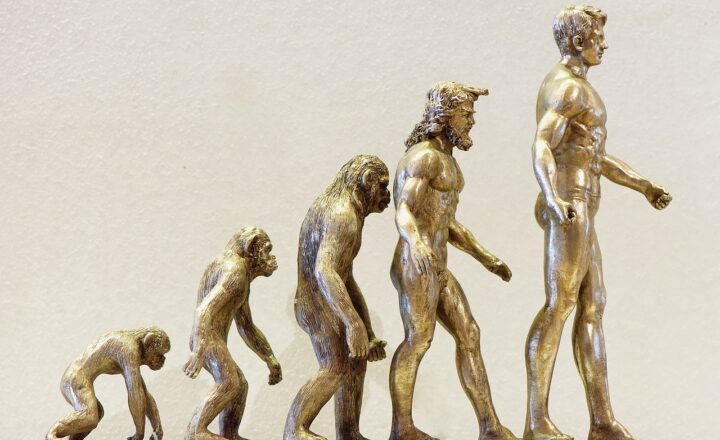The Most Unexpected Inventions Created by Complete Accident
November 16, 2024

In our fast-paced, technology-driven world, we often take for granted the inventions that have immensely shaped our daily lives. Interestingly, many groundbreaking innovations stem from pure chance rather than meticulous planning or intent. This article explores some of the most unexpected inventions created by complete accident, revealing how serendipity has the power to lead to revolutionary products that changed the course of history.
1. The Accidental Discovery of Penicillin
One of the most famous accidental discoveries in history was made by Scottish bacteriologist Alexander Fleming in 1928. While researching staphylococci bacteria, Fleming noticed something unusual in one of his petri dishes. A mold known as Penicillium notatum had contaminated the dish and created a bacteria-free circle around it. Intrigued by this phenomenon, Fleming began investigating further and isolated the active substance, which he called penicillin.
Penicillin became the world’s first widely used antibiotic, saving countless lives during World War II and beyond. This fortuitous event not only revolutionized medicine but also paved the way for the development of other antibiotics, creating a new frontier in health care.
2. The Microwave Oven: A Toasty Surprise
The invention of the microwave oven traces back to the 1940s when engineer Percy Spencer was working with radar technology. During a radar equipment test, Spencer realized that a chocolate bar in his pocket had melted. Curious about this unexpected outcome, he experimented further using popcorn kernels, which exploded, and eventually an egg, which exploded too.
After perfecting the technology, Spencer and his company, Raytheon, produced the first commercial microwave oven in 1947. Although quite expensive at the time, today, microwave ovens are a staple in households around the world, making reheating food quick and efficient.
3. Post-it Notes: A Sticky Situation
In 1968, Spencer Silver, a scientist at 3M, was attempting to develop a super-strong adhesive. Instead, he created a repositionable adhesive that was weak enough to be applied to surfaces but strong enough to hold papers together without damaging them upon removal. For years, Silver’s invention sat in the shadows, unappreciated and dismissed as a failure.
It wasn’t until a colleague, Arthur Fry, came up with the idea to use this adhesive for bookmarks that post-it notes were born. Launched in 1980, Post-it Notes quickly became essential tools in offices globally, allowing for reminders and messages that could stick and be easily removed.
4. The Slinky: The Unexpected Spring
In 1943, engineer Richard James was working on a project to create a spring that would stabilize sensitive instruments on ships. During his experimentation, he accidentally knocked one of his prototypes off a shelf. To his surprise, the spring started to walk down the stairs, much to his amusement. This unexpected event led to the creation of the Slinky.
Initially marketed as a toy, the Slinky became an instant sensation, captivating children and adults alike with its ability to walk down stairs. Today, the Slinky has sold millions of units and has become a cultural icon representing creativity and fun.
5. Velcro: The Art of Hook and Loop
In 1941, Swiss engineer George de Mestral went hiking in the Alps with his dog. When he returned, he noticed that both he and his dog were covered in burrs. Intrigued by how these burrs clung to fabric and fur, he examined them under a microscope. Inspired by this natural design, de Mestral set out to create a similar fastener and, in 1955, patented the hook-and-loop fastener we know today as Velcro.
Velcro revolutionized various industries, from fashion to aerospace, because of its simplicity and versatility. Today, Velcro is used in countless applications, from shoes to medical devices.
6. Artificial Sweeteners: The Sweet Mistake
In 1879, chemist Constantin Fahlberg was working on coal tar derivatives when he accidentally discovered a sweet substance on his hands after a laboratory experiment. After tasting it, he realized it was much sweeter than sugar. This unexpected discovery led to the development of saccharin, the first artificial sweetener, paving the way for a myriad of sugar alternatives we have today.
Artificial sweeteners have become widely popular due to dietary preferences and health concerns over sugar intake, forever changing the food industry and contributing to the low-calorie and sugar-free product boom in modern markets.
7. Safety Glass: A Fortuitous Break
The invention of safety glass can be attributed to French chemist Édouard Bénédictus, who accidentally dropped a glass flask that had contained a celluloid solution. To his surprise, the glass didn’t shatter; instead, it cracked but held together. Bénédictus realized that incorporating a resin could prevent glass from shattering upon impact, making it much safer.
In 1909, he patented his idea, which has since been applied to car windshields and buildings, thereby saving countless lives and preventing injuries worldwide. Safety glass is now an essential standard in modern construction and automotive design.
Conclusion: Serendipity in Innovation
The stories of these accidental inventions highlight that not all breakthroughs come from careful innovation and planning; sometimes, luck and curiosity play pivotal roles. These incredible accidents transformed ordinary occurrences into extraordinary products, enriching our lives in varying ways. They serve to remind us that embracing chance and creativity can lead to remarkable discoveries, reshaping our understanding of what it means to invent. So the next time you think about innovation, remember that accidents can indeed yield incredible results, and you never know what groundbreaking idea may emerge from unforeseen circumstances.







